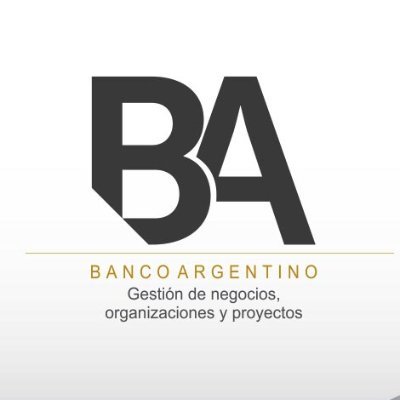When the calendar approaches December, the presumably joyful wait for the last days of the year returns with some celebrations. Managements that organize meals, WhatsApp groups of teams that close schedules for “the end of the year dinner,” and lunches with colleagues that, once, were an excuse to relax the agenda. But in recent seasons that script added an unexpected character: burnout. Nobody invited him, nobody planned it, yet he appears at the table, with a low voice and an exhausted look.
The phenomenon can be observed in any office, with an increasingly frequent scene: half-hearted laughter, toasts that are cut short by checking an urgent email, conversations that begin with “do you remember the closing?” and end in confessions about lack of sleep.
This mix of celebration and tension is not anecdotal: a Trendsity study detected that 81% of Argentines said they felt like victims of overworking, and that 35% of young people between 18 and 25 years old reported excessive workloads; Furthermore, the consulting firm warned that “digital disconnection” had become, in practice, almost a myth: “The pressure to always be available burns out teams,” said Mariela Mociulsky, Founder and CEO of the trends consulting firm.
«The end of the year usually concentrates multiple sources of tension: agendas saturated with meetings and commitments, the demand to meet goals, the burden of personal and professional balances, at the same time that school and family activities intensify. Added to all this is a climate of economic uncertainty that further enhances this level of stress,» adds Mociulsky.
Wellbeing and flexibility: companies’ response to burnout
The phenomenon of burnout is not only a fact in surveys: it is also a concern in corporate agendas. In this area, different actors in the labor ecosystem have been testing responses that range from organizational health to flexible benefits.
Some companies, for example, propose four-day weeks without a pay cut and report not only improved health and well-being, but a productive reorganization that eliminated unnecessary meetings and helped prioritize essential tasks.
“Contributing to an organizational culture where teams are cared for also improves productivity and the attraction of talent,” confirms Ariel Dosoretz, co-founder of Briut Salud, a comprehensive health platform that combines medical teleconsultations, preventive programs and complementary therapies, with a focus on companies that seek to offer tangible benefits. Its proposal is aimed at reducing absenteeism and stress in teams, in line with what studies show on the importance of well-being as a driver of productivity.
In the same direction, Naaloo suggests that flexibility is a strategic resource against exhaustion. «Flexibility is not a privilege, but a strategy. 94% of Argentine workers suffer chronic work stress; adapting schedules according to personal needs reduces anxiety,» said Francisco Costa, founder and CEO of the firm. His company offers solutions that, among other things, simplify for companies, particularly for human resources areas, the management of labor benefits adapted to new demands: extended licenses, special permits and reduced working hours schemes.
The role of human resources professionals appears as a key piece so that initiatives do not remain at the level of announcements. «In December, the pressure to meet objectives and the overload of personal commitments combine. From the areas of human capital, this scenario must be anticipated and accompanied with policies that help balance the demands,» explained Cecilia Russo, founder of Cecilia Russo Team + Human -specialist in human capital management-. Its approach emphasizes implementation: how to translate solutions and approaches to address the situation into sustainable practices so that everything is not diluted in the maelstrom of the end of the year.
Added to this vision is the contribution of Victoria Blazevic, a coach specialized in personal and professional development. «The end of the year confronts us with the risk of automating demands and forgetting what is essential: connecting with the meaning of what we do. When that is lost, burnout becomes almost inevitable,» he said. With experience in corporate communication and in supporting leaders and teams, Blazevic developed the proposal of “provoking reflection” as a tool to integrate the personal and professional.
End-of-year stress is not just a widespread feeling: it is a phenomenon documented by statistics and confirmed by the experience of companies and workers.
In this scenario, specialists agree that organizations have room to act. The first key is to prioritize planning: «Anticipating project closures and organizing deadlines avoids the accumulation of tasks in the last weeks of December. It is also essential to enable spaces for flexibility, either through adaptable schedules, special licenses or the possibility of partial teleworking,» says Russo.
Another point that appears in the recommendations is the promotion of self-care. It’s about legitimizing that teams can stop and rest without feeling guilty. “Rest must stop being seen as a reward and be recognized as part of the job,” adds Costa.
The same idea appears reinforced in Blazevic’s reflection, who highlights the value of rest as a leadership practice. «Conscious rest is a leadership decision. It is not just about pausing, but about choosing how we want to start again. That practice, in December, can make the difference between closing a cycle exhausted or closing it strengthened,» he noted.
At a cultural level, the companies that advance the fastest are those that manage to install the conversation about burnout on the agenda of leaders and middle managers.
The challenge, specialists emphasize, is that these measures are not applied solely as a reaction to December. Preventing burnout requires continuity throughout the year. The data that reflects that 6 out of 10 workers already feel the pressure of the end of the cycle, works as a wake-up call: if burnout is concentrated in the last month, it is because something in the organization for the rest of the year also needs to be reviewed.
What is burnout: more than just tiredness
The World Health Organization (WHO) defines burnout as “the result of chronic stress in the workplace that has not been successfully managed.” The syndrome is not limited to fatigue, but combines physical and emotional exhaustion, distancing from the task and a drop in professional effectiveness. In December, this situation usually intensifies because family commitments and personal balances are added to work stress.
The most common warning signs include persistent fatigue, sleeping difficulties, irritability and increased absenteeism.
The American Heart Association warned that in December there are peaks of anxiety and tension that impact cardiovascular health. This additional pressure increases burnout and translates into more doctor visits and sick leave.
The panorama is replicated in the workplace. A report from Adecco, a multinational specialized in human resources, showed that in December 2024 in Spain both absenteeism and workplace accidents increased.
In Argentina, a Bumeran survey showed that the percentage of workers who said they suffered from burnout rose from 81% in 2021 to 94% in 2023. More than half assured that their companies did not implement measures to combat it, while only 28% offered emotional help.
Cost is also measured in terms of productivity. Gallup data showed that companies that invest in well-being achieve up to 89% higher employee retention. This finding reinforces the strategy of Briut, whose co-founder, Ariel Dosoretz, emphasizes: «Companies are finding in well-being a way to differentiate themselves. It is not just about offering one more benefit, but about demonstrating that they really care about the quality of life of their collaborators. And this, beyond being a noble gesture, has a tangible impact on the organizational culture.»
Beyond the numbers, Blazevic warns that December can be a time to review how those results are reached. «The end of the year should not be a final sprint, but a time to review learning. If we live it as a race against the clock, teams break; if we understand it as a pause to make sense, teams grow,» he reflected.
The end of the year reveals a tension between productivity and well-being that runs through the entire workforce. The path that companies choose to resolve this tension will define not only their internal climate in December, but also their ability to attract and retain talent in an increasingly competitive market.
Discover more from LatamNoticias
Subscribe to get the latest posts sent to your email.





